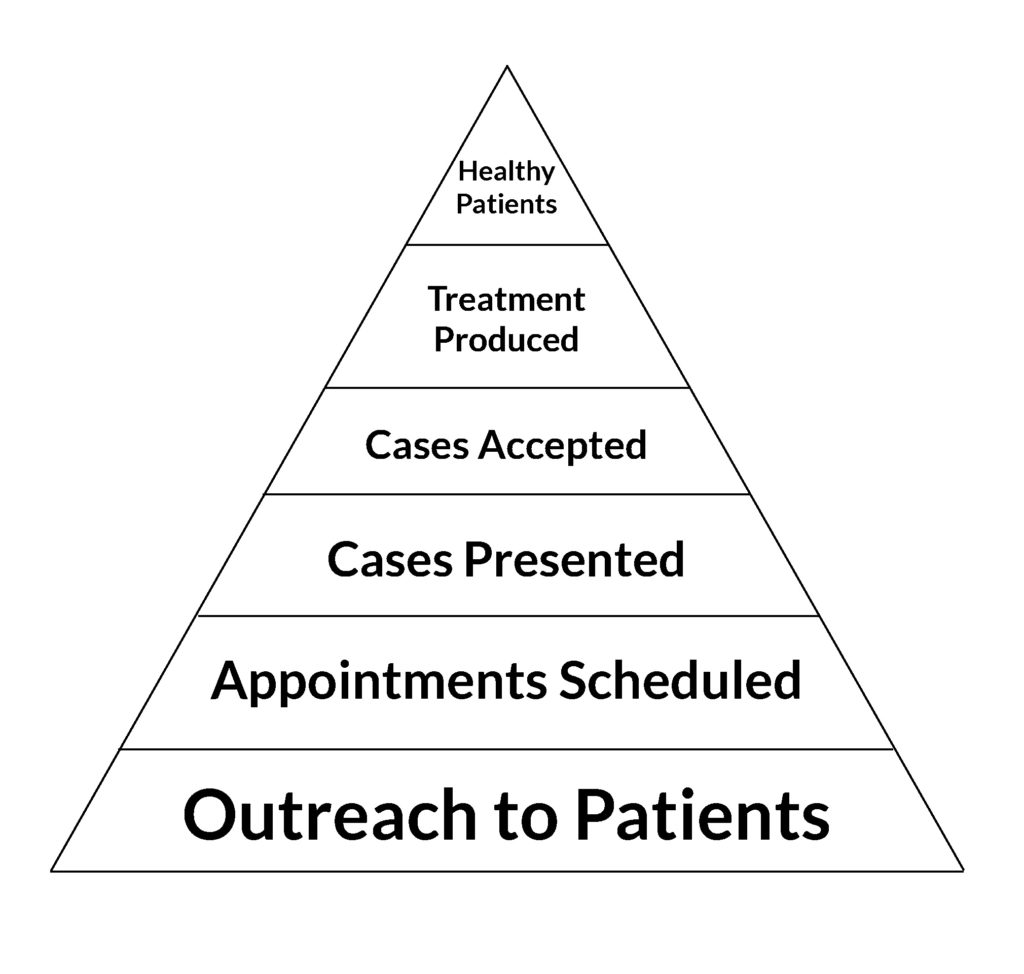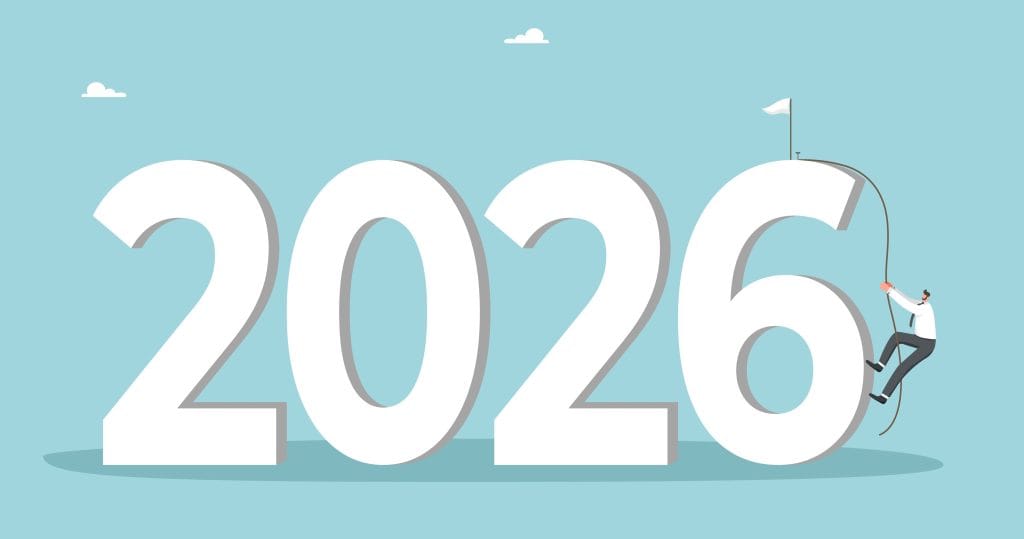Last updated on November 20th, 2025 at 01:04 am
Last updated on November 4th, 2025 at 05:58 pm
 I’m always amazed when I hear a dentist refer to a “bad month” as if it’s some type of natural phenomenon. Dental practice production was low and there’s nothing that could have been done about it…nor any good explanation of why it was a bad month. As if production numbers are just a matter of fate and not something that can be controlled.
I’m always amazed when I hear a dentist refer to a “bad month” as if it’s some type of natural phenomenon. Dental practice production was low and there’s nothing that could have been done about it…nor any good explanation of why it was a bad month. As if production numbers are just a matter of fate and not something that can be controlled.
What’s more amazing still is when I hear this halfway through a month. The month isn’t even over yet and it’s already “a bad month!” They’ve given up already.
What they don’t realize is that good and bad months don’t “just happen.” They are caused! You can actually have control over the number of patients you see and your production from day to day and week to week.
(Related: Want to Open a New Dental Office? Here’s Where to Start)
How?
Well, high production in a dental office is a numbers game.
What do I mean by that?
I mean that it’s a matter of simple calculations:
- In order to have an “X” amount of production, you need to hit a certain amount of case acceptance.
- And in order to get those cases accepted, you need to see a certain number of patients.
- And in order to see those patients, you need to schedule a certain number of appointments.
- And in order to schedule those appointments, you need to reach a certain number of patients (new patients or patients-of-record).
(Related: Should You Share the Numbers with Your Staff?)
If you were actually to track all of these things (the number of phone calls the front desk makes to patients, the number of appointments scheduled, the number of patients seen, the number of cases presented, etc.), you’d be surprised by the exactness of the pattern that appears.
And while these ratios/numbers vary by office – i.e. certain number of patients seen vs. production and so on, you can work out the numbers that fit your unique situation based on past experience.
(Related: Consistent Practice Performance: Eliminating Down Months)
- You’ll find out almost every time, X number of phone calls = X number of patients scheduled.
- X number of patients seen = X number of cases presented.
- X number of cases presented = X number of cases accepted and started.
- X number of cases accepted = X number of patients you’ve helped become healthy.
That’s how you help more people and increase your production.
You could draw out a pyramid to illustrate this:

Case in point, one MGE client (who has two large practices and a large number of charts) was running a program to reactivate his inactive patients, and he found that one staff member calling inactive patients on the phone would schedule .75 appointments per hour. So he hired a flock of high school age kids part-time to run the program—and after some training, they were scheduling over 200 total appointments per week.
(Related: 3 Case Acceptance Killers)
And of course these numbers per hour go up as the person gains more experience on the job.
He didn’t have any trouble filling up the schedule after that. And at relatively little cost.
So keep this pyramid in mind. If you want to increase production significantly, then you need to do all the lower steps of the pyramid! And not just a little bit here and a little bit there. You need to get busy reaching as many patients as you can until your schedule fills up with valuable production.
I often see dental offices dabbling in a recall program or reactivation program here or there when they have time…and then they get distracted or become “too busy” to keep it up. It’s no wonder that their production is inconsistent.
(Related: How Your Hygienist Can Help Increase Case Acceptance)
That’s the wrong mentality.
You shouldn’t get discouraged if nobody shows up after making ten or twenty phone calls. You might need to make hundreds.
 So set high targets for your staff (e.g. number of phone calls, messages, emails, letters, appointments, etc.) and make sure they are met—no matter how busy the office is at the moment or what else is going on. Each staff member is responsible for making a certain number of calls, or sending a certain number of letters/emails before they leave the office. Track them, so you know if the program starts to drop out (and then you won’t have to wonder why the schedule empties out a short while later).
So set high targets for your staff (e.g. number of phone calls, messages, emails, letters, appointments, etc.) and make sure they are met—no matter how busy the office is at the moment or what else is going on. Each staff member is responsible for making a certain number of calls, or sending a certain number of letters/emails before they leave the office. Track them, so you know if the program starts to drop out (and then you won’t have to wonder why the schedule empties out a short while later).
Here are some of the specific activities you and your staff should be doing day in and day out:
(Related: Improving Staff Initiative in the Dental Office)
Recall – Phone calls, emails, letters, text messages.
Reactivation – Phone calls, emails, letters, text messages. At MGE, we have a turn-key Reactivation Program that you can implement in your office immediately. Contact us if you’d like a free copy.
One important thing to remember with reactivation: Don’t just focus on patients you’ve seen in the last year or two. Go back further. You’ll be surprised how many long-lost patients will show up again if you make a little effort. You may have thought they’d forgotten all about you—but in their mind you’re still their dentist! So make a list of every patient you’ve seen in the last five years and reach out to them.
Outstanding Treatment Follow Up – Your practice management software should be able to generate a report of all your patients with outstanding treatment. These patients should all be contacted (however they can, with phone calls, letters, emails, texts, etc.) and gotten back into the practice to get the treatment they need.
(Related: 3 Ways to Improve New Patient Conversion)
Appointment Confirmations and Reminders – This one is obvious, and hopefully you are doing it already, whether it’s with personal calls or automated messages.
Newsletters & Marketing for Existing Patients – I suggest emailing patients at least once a month, and sending a newsletter once a quarter. This newsletter (by email, hard mail, or both) should include patient education and a special offer for a particular service. For more information about this, see my other article about Internal Marketing.
New Patient Marketing – There are several things you should be doing on a continual basis to attract new patients, including:
- Referral programs. (This is an active day-to-day activity that the staff should be participating in.)
- External marketing (mailers, ads, online marketing, community outreach, etc.).
To learn how to do these things cost-effectively, attend the MGE New Patient Workshop!
So make sure all of these activities are happening in your office on a continual basis! If production is starting to dip, push these activities a little harder. Reach out to more patients, and you’ll find that production inevitably increases again.
I hope this helps!


Hello, I’m hoping someone could send me the reactivation system information as well.
Thank you.
Hi Dr. Piotrowski,
I just forwarded your email to one of our staff members. You should receive the reactivation program shortly!
Best,
Kelly
Hi
Excellent blog.Please can I get a copy of the reactivation protocol you referred to in your blog. Thanks. Dr R. Arora
Hi Dr. Arora,
Thank you! I Forwarded your email to one of our staff members. They will send you the reactivation program shortly.
Best,
Kelly
Hi ,
I was windering if you can send me your reactivation program
Best Regards
Jeka
Hi Dr. Saban,
I forwarded your email to one of our staff members. You should receive the reactivation program soon!
Best,
Kelly